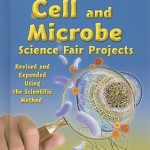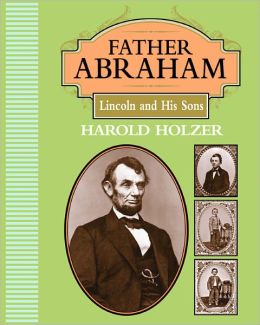This book begins with the explanation of the four types of relationships and how to build healthy relationships before going on to describe how to handle conflict and the signs of a bad relationship. There are sidebars on cyberbullying, how to know if you are ready to have sex, how much teen-aged boys lie about sex and more. It ends with a glossary and additional references. There are numbers and websites for teens who are suffering from abuse. The book offers solid advice; I’m just not sure how many teens will seek this advice in a library book.
Tag Archives: nonfiction
Brown v. Board of Education
This book begins with background of Civil Rights for African-Americans , from the end of the Civil War to the events leading up to Brown v. Board of Education. The discovery of the events of the Holocaust forced the United States to confront the racism within our own borders. It discusses the division within the Supreme Court before the decision and the resistance of many states to implement it, as well as the progress made in the Civil Rights movement and what is still needed. At the end of the book, there is a list of important individuals, a timeline and additional resources, including a link to related primary source documents.
While the primary source material could be useful to upper grades, this book is definitely intended for grades 4-6.
The Story Behind Maps
This reference on maps gives a brief history of mapmaking and famous mapmakers. It also provides information on types of maps, reading maps and on map projections. It ends a chapter titled, “The Future of Maps” that discusses satellites and sky surveys. There is a timeline, glossary, resources for more information at the end of the book in addition to the beautiful photographs and maps throughout the book. However, the book is aimed at a very young audience, and as a high school teacher, I do not know if it will find an audience in an elementary school.
The Ten Year Century
This book takes stock of the major events that occurred during the first decade of the twenty-first century: “breaking down the decade’s most significant events year by year, from the 2000 presidential election recount to the rise of globalization to the advent of Twitter…” From the dot.com bust, WMDs, the Surge, the Maverick to the Audacity of Hope, the major stories of the period are examined. The epilogue states that “…our constant flow of information from the media makes every crisis seem all the more dramatic.” One of our English teachers looked through this book and said that excerpts from it would be great to use for lessons in reading informational text. That in itself makes it a useful addition to the library.
Genetically Modified Foods
The world of genetically modified foods is discussed in this volume of the Nutrition and Health series. The author explains how GM crops were developed, how GM foods are made, and the advantages of and concerns about GM foods. The pages are visually appealing with color photos, fact inserts, and full page articles with related information. The book does a good job presenting both sides of the issue and provides a glossary, organizations to contact, and a list of references for more information. There is not enough information for upper level high school students doing research, but for younger students or those just looking for a place to start, it will suffice.
Buried Alive: How 33 Miners Survived 69 Days Deep Underh the Chilean Desert
This is account of the 33 Chilean miners who were trapped in a mine after a collapse is absolutely riveting. The photographs of the miners in the mine, their families above ground waiting, hoping and praying, the rescuers, the technical pictures of the rescue equipment and the reunion of the miners with their families and the outside world are incredible. Every chapter had the word “together” in the title, Working, Surviving, Waiting, Planning Together, and more. It is clear that if the men had not worked together as one group they might not have made it. And if experts from all over the world had not offered their expertise the rescue might not have been a success. Natural leaders emerged in the group underground, men who understood that if the miners did not continue to work at something, they might languish and die. The story was incredible and this telling of it captures the despair, the fear, and the ultimate joy.
Human Travel to the Moon and Mars: Waste of Money or Next Frontier?
This reference is part of USA Today’s Debate: Voices and Perspectives series. Author Matt Doeden presents arguments both for and against advancing the space program, including facts and figures as well as experts’ opinions. The dangers inherent in space exploration are weighed against the possible payoff of more territory for human settlement. The book begins by asking the question should we stay or should we go and then provides a short history of space exploration. A discussion of the dangers of the space program contains a section on the Challenger, including primary source material such as USA Today news articles. A timeline, glossary and additional resources are at the end of the book.
Cell and Microbe Science Fair Projects
 For upper elementary and middle school students, this book is an introduction to cells and microbes. A dozen different science experiments are detailed in a step-by-step fashion starting with a basic question and then moving from hypothesis through procedure to the result and conclusion. The introduction addresses topics such as: How Scientists Search for Answers, Using the Scientific Method, designing the experiment, recording data, writing the science fair report and tips for success at the science fair. Illustrations, charts, graphs and macro-photography aid in understanding. Table of contents, index, further reading list, internet sites list, and three appendices: microbe identification guide, microscopy and image processing, and science supply companies round out the book.
For upper elementary and middle school students, this book is an introduction to cells and microbes. A dozen different science experiments are detailed in a step-by-step fashion starting with a basic question and then moving from hypothesis through procedure to the result and conclusion. The introduction addresses topics such as: How Scientists Search for Answers, Using the Scientific Method, designing the experiment, recording data, writing the science fair report and tips for success at the science fair. Illustrations, charts, graphs and macro-photography aid in understanding. Table of contents, index, further reading list, internet sites list, and three appendices: microbe identification guide, microscopy and image processing, and science supply companies round out the book.
This will be a heavy read for 5th and 6th grade, but the experiments are easy to accomplish and to understand, making it a good choice for students who want more of a challenge.
Father Abraham: Lincoln and his sons by Harold Holzer
 Father Abraham: Lincoln and his sons
Father Abraham: Lincoln and his sons
Harold Holzer
Calkins Creek 2011
9781590783030
Age Recommended for: 5th grade and up. (This is an excellent and readable history for young people.)
Plot Synopsis: Abraham Lincoln became President when our country was divided over the slavery issue. He also lived in a household almost as divided. Abe and Mary Todd Lincoln were parents to four lively and energetic boys. The parenting styles of Lincoln and his wife Mary Todd couldn’t have been more different. He was calm, but also often absent in his children’s lives. Mary Todd Lincoln was hysterical at times, but demonstrative. They both indulged their children way too much to the chagrin of relatives and neighbors! The story follows the Lincolns family history from the birth of their boys to their lives in the White House and afterwards – following four generations of Lincolns. The text includes archival photographs, bibliography, primary source material and index.
What I liked about it and who would enjoy it: Anyone who likes well-written and readable history! What is amazing about reading history is how the problems of previous times are so similar to today. Lincoln was the absentee father and Mary was the neglected wife. There was so much fear and uncertainty that they lived with during their time, as we do today. I learned a lot about what the Lincoln family had to endure during that time, including the fact it was too dangerous for Lincoln and his family to travel together to Washington D. C. for the inauguration! You have to ask yourself why anyone would want to take on the Presidency during that time. Sadly, the Lincoln line died out in the 4th generation. Author Harold Holzer is a leading authority on Lincoln and has written 35 books about him. “Father Abraham: Lincoln and his sons” is a NCTE Orbis Pictus Award for Outstanding Nonfiction for Children.
